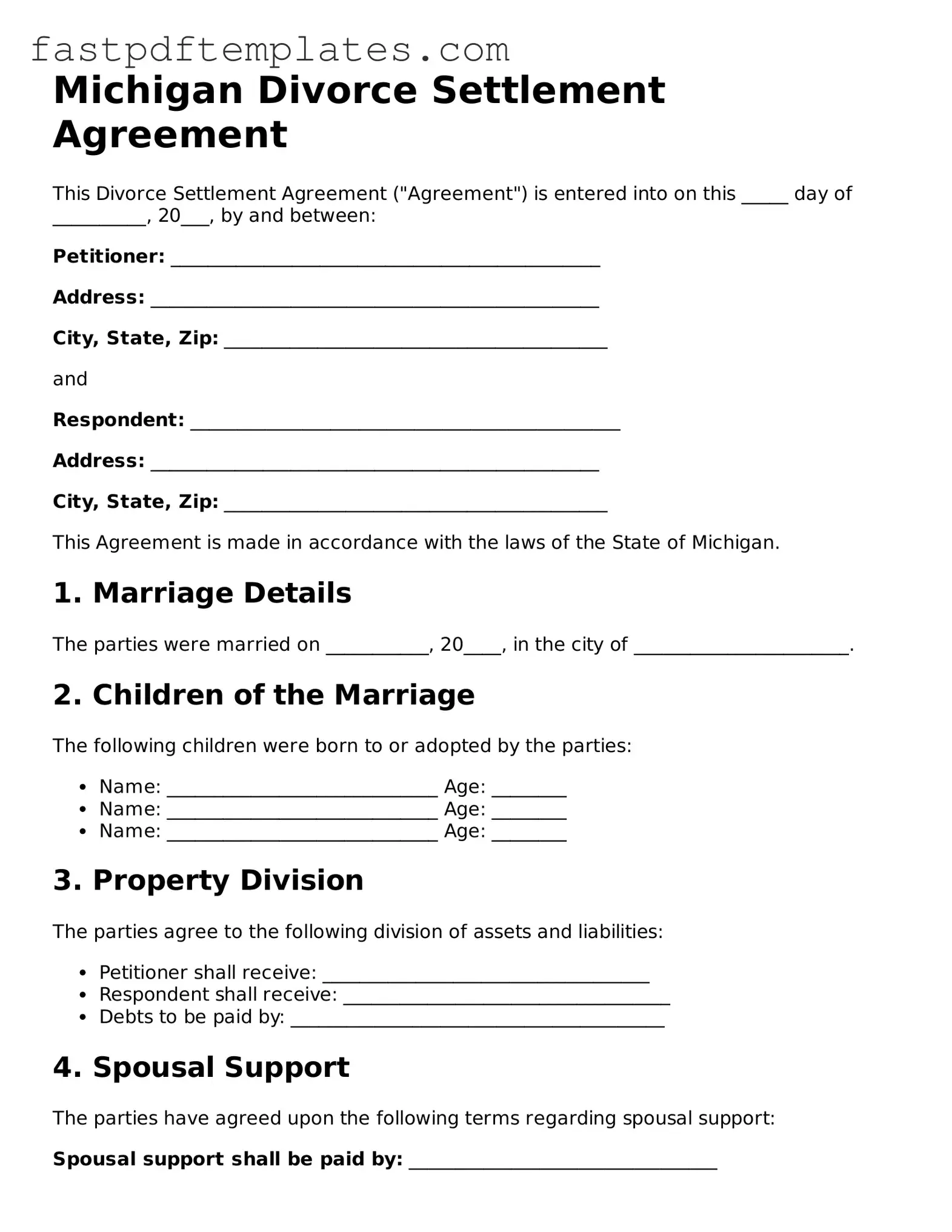Michigan Divorce Settlement Agreement
This Divorce Settlement Agreement ("Agreement") is entered into on this _____ day of __________, 20___, by and between:
Petitioner: ______________________________________________
Address: ________________________________________________
City, State, Zip: _________________________________________
and
Respondent: ______________________________________________
Address: ________________________________________________
City, State, Zip: _________________________________________
This Agreement is made in accordance with the laws of the State of Michigan.
1. Marriage Details
The parties were married on ___________, 20____, in the city of _______________________.
2. Children of the Marriage
The following children were born to or adopted by the parties:
- Name: _____________________________ Age: ________
- Name: _____________________________ Age: ________
- Name: _____________________________ Age: ________
3. Property Division
The parties agree to the following division of assets and liabilities:
- Petitioner shall receive: ___________________________________
- Respondent shall receive: ___________________________________
- Debts to be paid by: ________________________________________
4. Spousal Support
The parties have agreed upon the following terms regarding spousal support:
Spousal support shall be paid by: _________________________________
Amount: $__________ per month, for a duration of __________.
5. Custody and Parenting Time
The parties agree on the following custody arrangement:
Custodial Parent: _______________________________________
Visitation Schedule: ______________________________________
6. Other Agreements
Any additional agreements related to this divorce include:
- _________________________________________________________________
- _________________________________________________________________
7. Governing Law
This Agreement shall be governed by the laws of the State of Michigan.
8. Signatures
By signing below, both parties agree to the terms outlined in this Agreement.
______________________________ Petitioner
______________________________ Respondent
______________________________ Date
______________________________ Date
